The process
Our uniqueness lies in the patented process that is decomposed into several stages. The cracking-, gas- and conversion-reactions are carried out in the absence of air each in separate zones of the reactors.

The process is a descending gasification with a bidirectional mass flow. The processes work at slightly positive pressure and at temperatures between 400°C and 850°C. The gas reaction is carried out over a char bed. The CO2 is captured in the char.
Key process features
By separating the different reaction stages an adoptable residence time of the products is achieved and the processes parameters can be controlled individually. Short-cuts of the gas stream are avoided.
Thus, the syngas process achieves the high level of variability and adaptability to the requirements derived from feedstock characteristics and product quality.
Modular Design
Both the reactors and the gas cleaning system are designed modular. Thus adjustments can be implemented with high efficiency at low cost.
Absence of oxygen
The absence of atmospheric oxygen in the process is the key to achieve the high quality of the syngas and to avoid the emission of organic contamination. However, it requires an innovative approach for heat transfer into the material.
The process implements indirect heating via a heating jacket that surrounds the reaction chamber without a direct connection. In combination with a carrier principle the required process energy is transferred from the heating jacket, into the reaction chambers and into the feedstock.
Gas cleaning
The gas cleaning (of the syngas before usage) including the removal of tars and oils from the syngas is an integrated process step. Tars and oils are fed back into the reactors in a closed loop or are discharged as products.
Many waste materials
The syngas plant can process a wide range of waste types. Below are a few
- All Municipal Solid Waste
- Biomass
- Sludge
- Packaging waste
- Tires
- Components from Car recycling
Also, materials with a high calorific value and higher contamination can be processed. The requirements for the pre-processing of the feedstock material are relatively low.
Advantages over competing processes
- Handles almost all types of waste
- Size of material
- The moisture level of the material
- The heating value of the material
Products Produced
The following products are produced in the syngas plant:
- Syngas
- Light oil
- Char
- Thermal Heat
SynGas
The synthesis gas can be used in most applications like natural gas.
Light Oil
The light oil can be either converted to gas within the synthesis gas plant and thereby used to the control to amount of syngas produced. Alternatively, the light oil can be used by external customers.
Char
The char can be used in different industrial applications or in power plants.
The characteristics and the proportions of the products are dependent on the characteristics of the feedstock.
